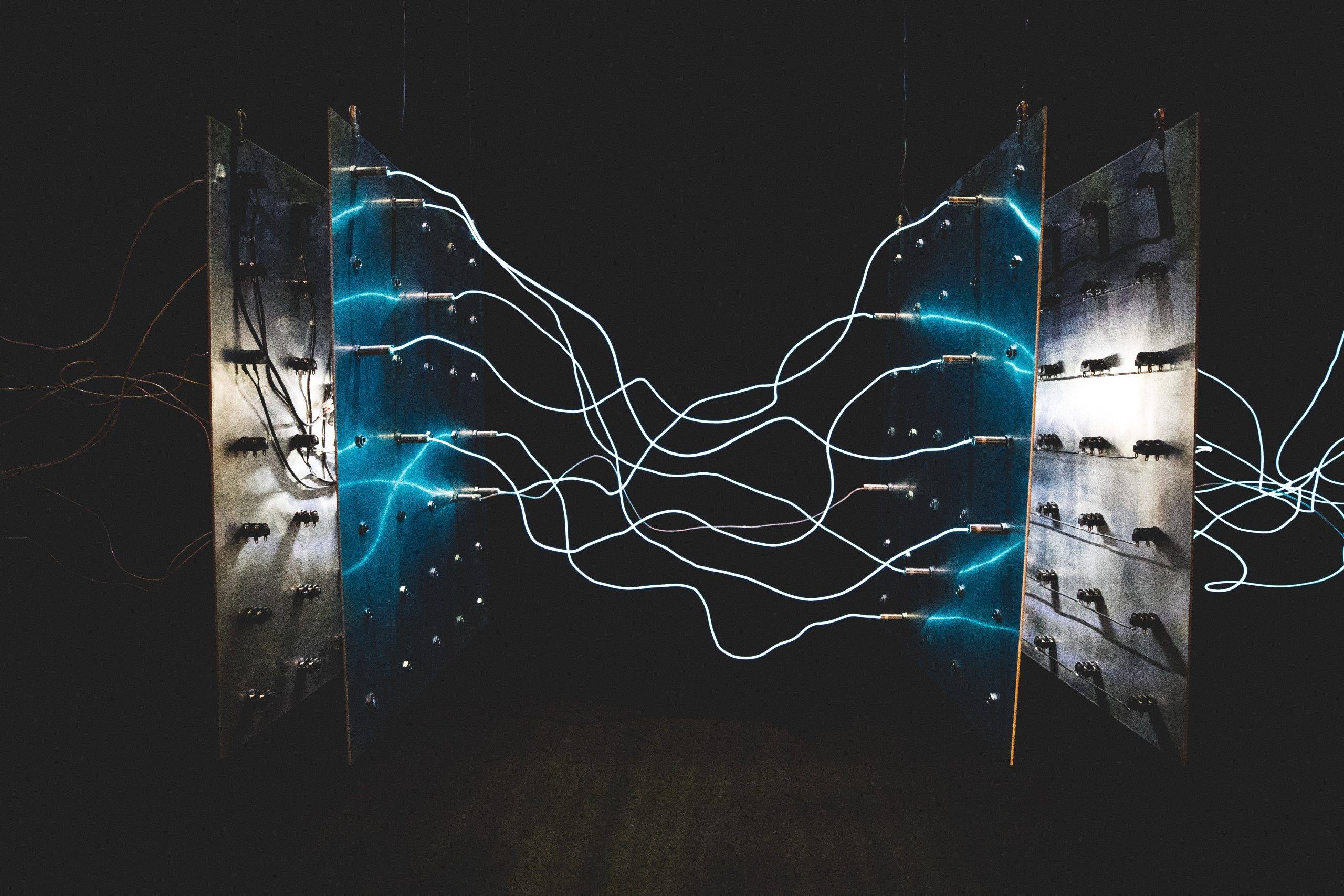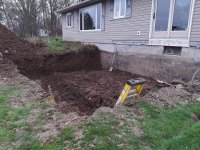Thanks!I don’t have any experience with indoor pools… but to the question about ventilation- look into either a Heat Recovery Ventilator (HRV) or an Energy Recovery Ventilator), depending on application. HRVs are primarily designed for cold weather climates where heating rather than AC is predominant—up north. ERVs are designed for the south or wherever cooling is predominant. One of these will likely help you in keeping the air freshly exchanged with outdoor air without wasting tons of energy on the AC unit. The AC will dry the air out, an ERV will take humidity out of the incoming fresh air by exchanging energy without the outgoing stale air.
Find someone with experience dealing with the pool specifics, but I’d guess that an ERV will help you achieve your goals.
Small indoor heated therapy pool
- Thread starter Deb Driesen
- Start date
-
- Tags
- indoor pool swcg uv light
You are using an out of date browser. It may not display this or other websites correctly.
You should upgrade or use an alternative browser.
You should upgrade or use an alternative browser.
- Status
- Not open for further replies.
PointeTaken
Bronze Supporter
- Aug 28, 2019
- 215
- Pool Size
- 12000
- Surface
- Fiberglass
- Chlorine
- Salt Water Generator
- SWG Type
- Hayward Turbo Cell (T-CELL-5)
What is your ceiling height?Room is 320 sq ft.
It's a gable style roof, ceiling is 11' at the peak and 7' on the sides. Room is 20' by 16'.What is your ceiling height?
PointeTaken
Bronze Supporter
- Aug 28, 2019
- 215
- Pool Size
- 12000
- Surface
- Fiberglass
- Chlorine
- Salt Water Generator
- SWG Type
- Hayward Turbo Cell (T-CELL-5)
ASHRAE specifies an ACH (air changes per hour) rate of 4 ACH for indoor pools (heated or unheated) with light use, or what HVAC engineers refer to as activity factors. The goal here is to remove both moisture AND chloramines, which the air becomes laden with. When the chloramines settle on surfaces, they can begin corroding metal and causing other issues. Build-up in the air itself can also cause respiratory irritation.
Since your ceiling is vaulted, taking the average of the two heights gives us 9 feet. 20x16x9 equals 2,880 cubic feet. To achieve 4 ACH, you need to exhaust and replace your air at a rate of about 200 cubic feet per minute. Often the supply rate will be designed to be a little higher to ensure adequate fresh air. There are several ways you can achieve this, but I think you’d be best off consulting an HVAC company that has an ASHRAE-certified engineer. They can take additional things into consideration, such as evaporation rates. Fortunately, given your small space, you’re not talking about relatively expensive air exchange needs.
Since your ceiling is vaulted, taking the average of the two heights gives us 9 feet. 20x16x9 equals 2,880 cubic feet. To achieve 4 ACH, you need to exhaust and replace your air at a rate of about 200 cubic feet per minute. Often the supply rate will be designed to be a little higher to ensure adequate fresh air. There are several ways you can achieve this, but I think you’d be best off consulting an HVAC company that has an ASHRAE-certified engineer. They can take additional things into consideration, such as evaporation rates. Fortunately, given your small space, you’re not talking about relatively expensive air exchange needs.
Thanks I appreciate you taking the time. I didnt mention that its only my husband and I using this pool and it will be covered 22 out of 24 hours a day. Its just for exercise and therapy. The SWCG will be turned way low as there is also a UV light for sanitizing the water. We don't believe a lot of chloramines will be produced, therefore. The pool manufacturer told us we would need to exhaust the room 3 times per hour or 140 cfm. But you're thinking 200 cfm. Ok. I see your logic. We're looking at HRV and ERV units. I really appreciate your help. We really want to get this right.ASHRAE specifies an ACH (air changes per hour) rate of 4 ACH for indoor pools (heated or unheated) with light use, or what HVAC engineers refer to as activity factors. The goal here is to remove both moisture AND chloramines, which the air becomes laden with. When the chloramines settle on surfaces, they can begin corroding metal and causing other issues. Build-up in the air itself can also cause respiratory irritation.
Since your ceiling is vaulted, taking the average of the two heights gives us 9 feet. 20x16x9 equals 2,880 cubic feet. To achieve 4 ACH, you need to exhaust and replace your air at a rate of about 200 cubic feet per minute. Often the supply rate will be designed to be a little higher to ensure adequate fresh air. There are several ways you can achieve this, but I think you’d be best off consulting an HVAC company that has an ASHRAE-certified engineer. They can take additional things into consideration, such as evaporation rates. Fortunately, given your small space, you’re not talking about relatively expensive air exchange needs.
PointeTaken
Bronze Supporter
- Aug 28, 2019
- 215
- Pool Size
- 12000
- Surface
- Fiberglass
- Chlorine
- Salt Water Generator
- SWG Type
- Hayward Turbo Cell (T-CELL-5)
You’re on the right track looking at HRV and ERV. And I think you’d probably be fine with 150 CFM. You could always have it controlled by a humidistat set to 40-50% so that you don’t have to worry about it; and you can add an override control to allow you to run it constantly while you’re using the pool and the cover is off. That said, the cost to step it up to a slightly higher rate is relatively little, and it might be worth oversizing just a little bit so you know you’re not going to have expensive mold issues.
Your build sounds really cool. Would love to see pics when it’s all finished!
Your build sounds really cool. Would love to see pics when it’s all finished!
Why does my Pentair Clean and Clear 150 filter need Diotomacus Earth?
Why do various equipment have different size fittings? Ex: Pentair IChlor 15 SWCG has 2" fittings while Pentair C&C 150 cartridge filter has 1.5" inch fittings? Pentair Superflo VST 1.5 hp pump has 2" fittings?
Thanks for your help!
Why do various equipment have different size fittings? Ex: Pentair IChlor 15 SWCG has 2" fittings while Pentair C&C 150 cartridge filter has 1.5" inch fittings? Pentair Superflo VST 1.5 hp pump has 2" fittings?
Thanks for your help!
Hi all, I really appreciate this forum and all the knowledge so freely offered. This stuff can be very confusing.
Our GC is talking about having the Electrician running copper wire through my dual handrails, which are the only metal parts in the pool, to ground them. Is that right? My husband and I have been reading there's a difference between bonding and grounding. Can anyone please explain the difference to us?
Thanks SO MUCH!
Our GC is talking about having the Electrician running copper wire through my dual handrails, which are the only metal parts in the pool, to ground them. Is that right? My husband and I have been reading there's a difference between bonding and grounding. Can anyone please explain the difference to us?
Thanks SO MUCH!
- Jul 3, 2013
- 9,027
- Pool Size
- 15000
- Surface
- Vinyl
- Chlorine
- Salt Water Generator
- SWG Type
- CircuPool SJ-40
I have 1 better... Videos 
Grounding is not bonding even though they do the same thing.. one is not connected to the other...
Grounding is not bonding even though they do the same thing.. one is not connected to the other...
CJadamec
TFP Expert
Your metal pool handrails absolutely should be bonded and properly connected to the bonding loop of the pool.
Your GC probably misspoke when he said grounded. It is very easy to get the two terms confused. Its probably best he is having the electrician do the work.
Your GC probably misspoke when he said grounded. It is very easy to get the two terms confused. Its probably best he is having the electrician do the work.
- Jul 21, 2013
- 67,040
- Pool Size
- 35000
- Surface
- Plaster
- Chlorine
- Salt Water Generator
- SWG Type
- Pentair Intellichlor IC-60

Bonding vs Grounding
Electricity and water don't mix. Learn a few basic tips how to keep your family safe when dealing with electricity around your pool.
Electrical Bonding - Further Reading
A Pentair Clean and Clear filter is a cartridge filter. The DE filters normally state DE on them. There is a DE Cartridge filter (but not Clean and Clear) and the other highly used is the FNS DE filter. Does your instructions state to use DE?Why does my Pentair Clean and Clear 150 filter need Diotomacus Earth?
Hi thanks for responding. Yes, the instructions say to add DE. We were surprised as we thought this was a cartridge filter that would just be flushed as needed. We don't really want to mess around with DE and would like to leave it out. Directions say when filter is new or freshly cleaned to add half pound of DE for every 100 sq ft of filter. Ours is 150 sq ft so about three quarters of a pound. Its not much but just wondered why. Directions say it will enhance filtration.A Pentair Clean and Clear filter is a cartridge filter. The DE filters normally state DE on them. There is a DE Cartridge filter (but not Clean and Clear) and the other highly used is the FNS DE filter. Does your instructions state to use DE?
Well that makes sense but I did think Pentair put that in the instructions. I have a DE filter so I have never read the instructions of a cartridge filter. It is not unheard of, even some sand filters there are recommendations to add some DE "to enhance the filtration". I do not think it will be an issue to not put DE but lets ask @Jimrahbe as he has used both a cartridge and DE and maybe can provide some more insight as to why Pentair states to add "some" DE to a cartridge filter.Hi thanks for responding. Yes, the instructions say to add DE. We were surprised as we thought this was a cartridge filter that would just be flushed as needed. We don't really want to mess around with DE and would like to leave it out. Directions say when filter is new or freshly cleaned to add half pound of DE for every 100 sq ft of filter. Ours is 150 sq ft so about three quarters of a pound. Its not much but just wondered why. Directions say it will enhance filtration.
Deb,
I would not add DE to a cartridge filter, even if Pentair says it is ok.. I took a quick read through the CCP-150 filter manual and did not see any place where they said to add DE.. Maybe it is there and I just did not see it.. If there, I suspect it says you "can" add a little DE, not that you have to add a little DE.
I suggest that you don't add any more...
Thanks,
Jim R.
I would not add DE to a cartridge filter, even if Pentair says it is ok.. I took a quick read through the CCP-150 filter manual and did not see any place where they said to add DE.. Maybe it is there and I just did not see it.. If there, I suspect it says you "can" add a little DE, not that you have to add a little DE.
I suggest that you don't add any more...
Thanks,
Jim R.
The manual does say to add DE.
In my opinion, I would not add DE.
If you really wanted to use something, I would suggest Cellulose fiber.
A cartridge should not need any additional help.
You are probably better off avoiding adding any products like DE or fiber.
 jacksmagic.com
jacksmagic.com

 fiberclearpoolandspafiltration.com
fiberclearpoolandspafiltration.com
https://aquamagazine.com/service/pool-filtration-cellulose-fiber-gains-on-de.html
In my opinion, I would not add DE.
If you really wanted to use something, I would suggest Cellulose fiber.
A cartridge should not need any additional help.
You are probably better off avoiding adding any products like DE or fiber.
When the cartridge element filter is used on new pools and after cleaning the elements, introduce into the system .5 pounds of diatomaceous earth per every 100 square feet of filter area, (a one-pound coffee can equals .5 pounds of diatomaceous earth). Mix the diatomite with water and pour it into the skimmer after the pump is primed and the system is operating. This will enhance the filtration of your water.
The Filter Fiber Stuff | Jacks Magic

For Cartridge Filtration Systems
With Cartridge Filtration Systems, A Little Fiber Clear™ Goes A Long Way Toward Cleaner, Clearer Water Typical cartridge filter systems are optimized for filter down to 20 microns. Fiber Clear™, Fiber Start™ and Fiber Blend™ are the practical additions to any cartridge system, providing an extra...
https://aquamagazine.com/service/pool-filtration-cellulose-fiber-gains-on-de.html
Grounding gives a path to stray line voltage back to the "ground "
Bonding equalizes any stray voltage and spreads it out lessening it. Think along the lines of static type shocks
Bonding equalizes any stray voltage and spreads it out lessening it. Think along the lines of static type shocks
- Jun 22, 2014
- 52,213
- Pool Size
- 17888
- Surface
- Fiberglass
- Chlorine
- Salt Water Generator
- SWG Type
- CircuPool RJ-45 Plus
Are there more pics coming? Is that hole just for the foundation? That's quite deep. Must be a frost line thing up there.
- Status
- Not open for further replies.
Thread Status
Hello , This thread has been inactive for over 60 days. New postings here are unlikely to be seen or responded to by other members. For better visibility, consider Starting A New Thread.
Similar threads
- Replies
- 1
- Views
- 91
- Replies
- 2
- Views
- 77
- Replies
- 4
- Views
- 190
- Replies
- 21
- Views
- 399





